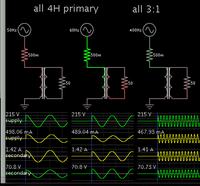mmuj
Junior Member level 3
Hi
I have to design a power supply as a part of a bigger system but I have no experience of high voltage power supply design.
I am looking for a reference design for high voltage low/medium power, isolated power supply.
Requirement specs are
VIN Range = 150V to 650V, 50/60Hz, 400Hz is an optional
VOUT = any thing between 24V and 48V
Output Power = 50W
Thanks and Regards,
M Mujahid
I have to design a power supply as a part of a bigger system but I have no experience of high voltage power supply design.
I am looking for a reference design for high voltage low/medium power, isolated power supply.
Requirement specs are
VIN Range = 150V to 650V, 50/60Hz, 400Hz is an optional
VOUT = any thing between 24V and 48V
Output Power = 50W
Thanks and Regards,
M Mujahid
